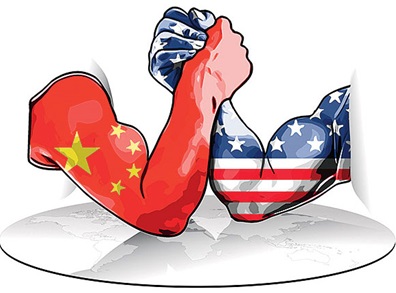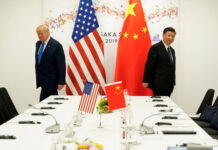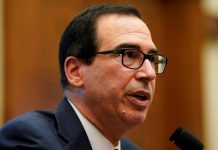
BEIJING: U.S. Treasury Secretary Steven Mnuchin said he was looking forward to trade talks with China on Thursday, as discussions in Beijing moved to a higher level in a push to de-escalate a tariff war ahead of a March 1 deadline for a deal.
The talks, scheduled to run through Friday, follow three days of deputy-level meetings to work out technical details, including a mechanism for enforcing any trade agreement.
“Looking forward to discussions today,” Mnuchin told reporters without elaborating as he left his hotel.
He and U.S. Trade Representative Robert Lighthizer opened the meetings shortly afterwards at the Diaoyutai state guest house with Chinese Vice Premier Liu He, the top economic adviser to Chinese President Xi Jinping.
U.S. tariffs on $200 billion worth of imports from China are scheduled to rise to 25 percent from 10 percent if the two sides don’t reach a deal by the deadline, increasing pressure and costs in sectors from consumer electronics to agriculture.
U.S. President Donald Trump told reporters on Wednesday that the negotiations had been progressing “very well”.
Trump’s advisors have described March 1 as a “hard deadline”, and the president has said a delay was possible though he preferred not to do so. But, a Bloomberg report on Thursday cited sources saying he was considering pushing back the deadline by 60 days to give negotiators more time.
Trump has said he did not expect to meet with Xi prior to March 1, but White House Press Secretary Sarah Sanders has raised the possibility of a meeting between the leaders at the president’s personal retreat at Mar-a-Lago in Florida.
U.S. Department of Agriculture Deputy Secretary Stephen Censky said on Wednesday that the two presidents were expected to meet “sometime in March,” but no dates were set.
The Chinese government has offered few details about the state of negotiations this week.
Chinese trade data released on Thursday showed imports from the United States fell 41.2 percent from a year earlier to $9.24 billion, the lowest amount in dollar terms since February 2016.
Exports to the United States also declined 2.4 percent to $36.54 billion, the lowest amount since April 2018.
China’s trade surplus with the United States narrowed to $27.3 billion in January, from $29.87 billion in December.
China’s soybean imports fell 13 percent in January from a year earlier, customs data showed, as a hefty duty on shipments from the United States, its second largest supplier, curbed purchases.
The United States has used tariffs as leverage to demand Beijing make major structural policy changes, including ending the forced transfer of American technology, fully enforcing intellectual property rights, and curbing industrial subsidies.
But China has denied accusations of trade abuses. While Chinese officials have repeatedly pledged to improve market access for foreign investors, few experts expect Beijing to agree to anything that would force fundamental changes to what Washington complains is its state-led approach to trade.
China’s nationalist state-run Global Times tabloid said in an editorial late on Wednesday that though Washington had started the trade fight, it “was now more willing to reach an agreement”.
“China will never harm its fundamental interests. The policy has been tested by the trade war and we have seen the change in Washington’s attitude,” the paper said.






















